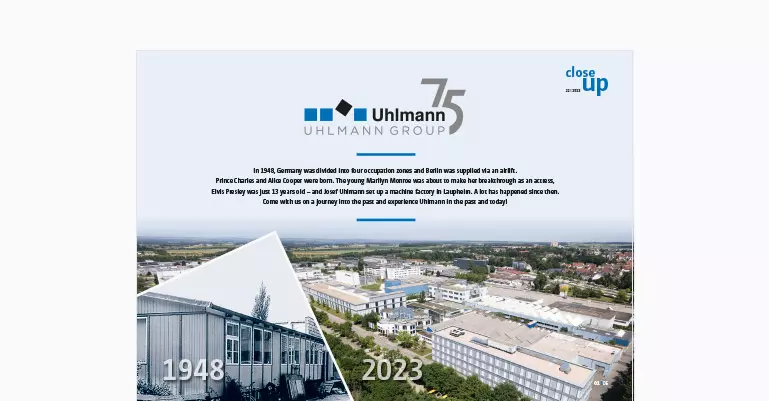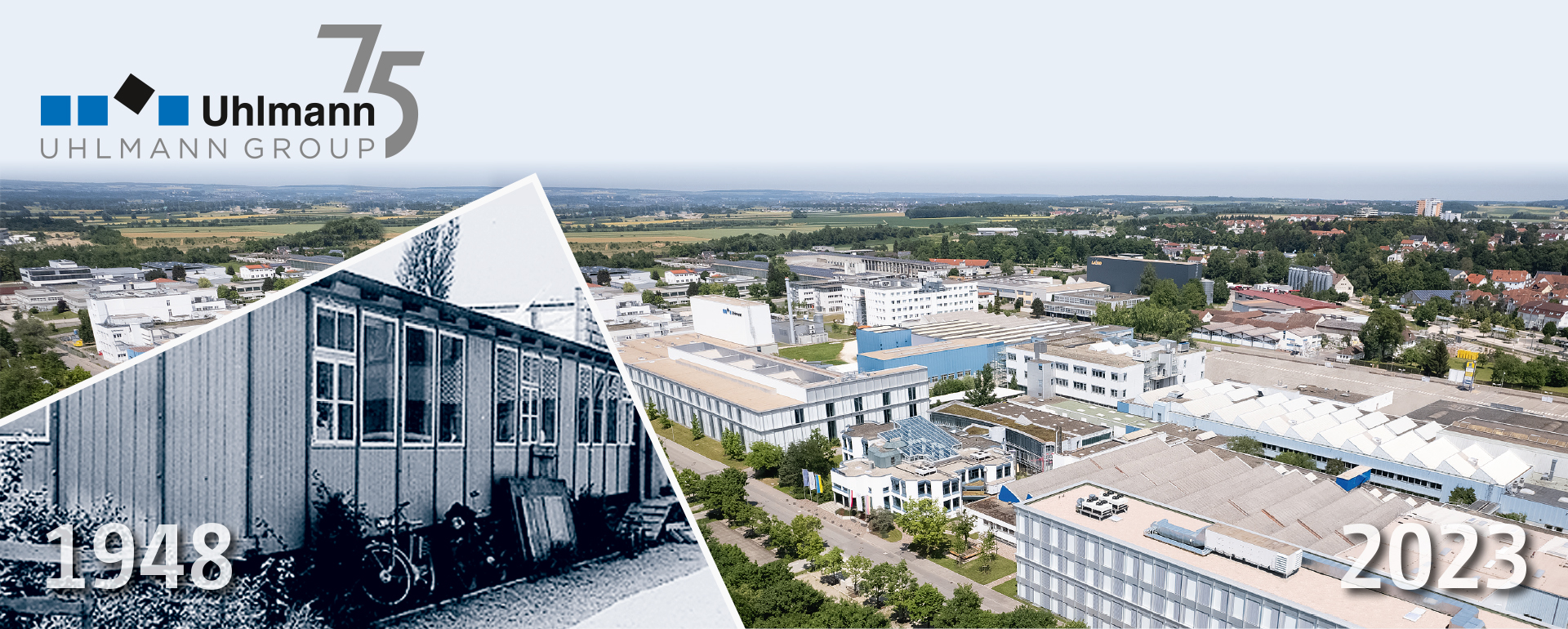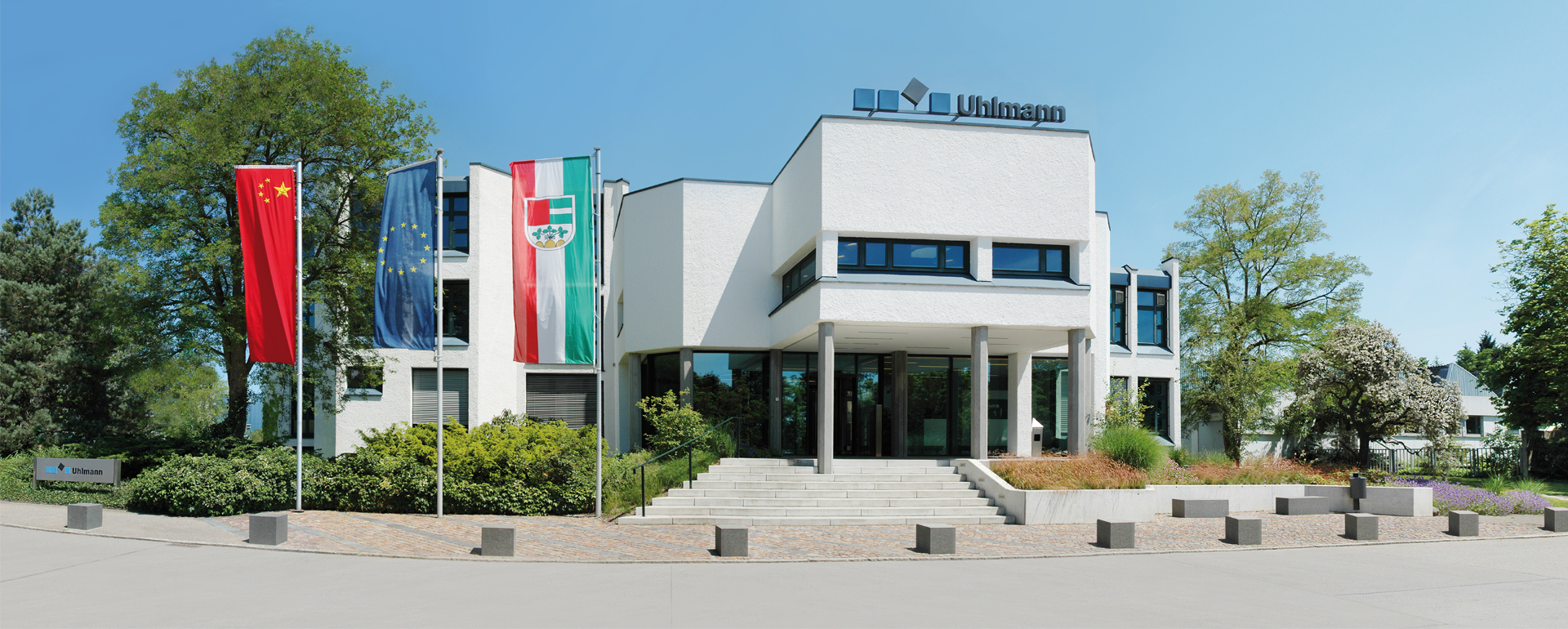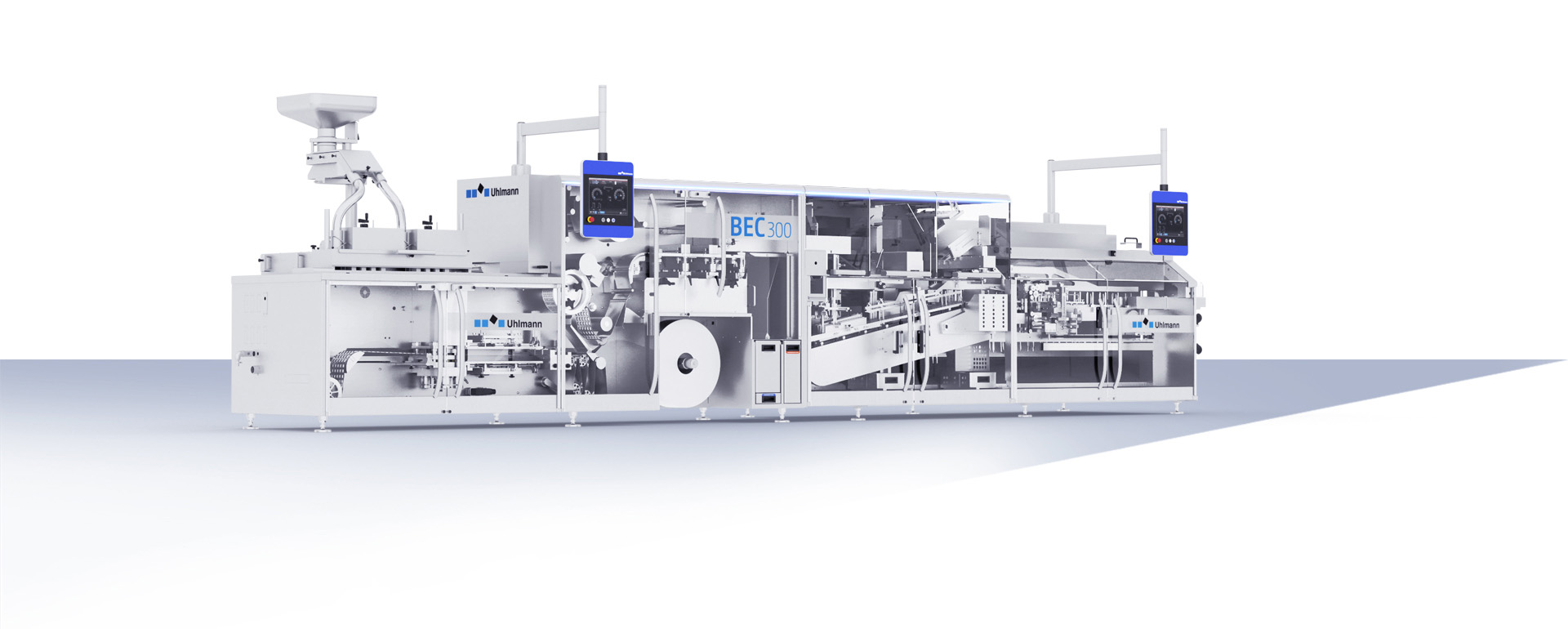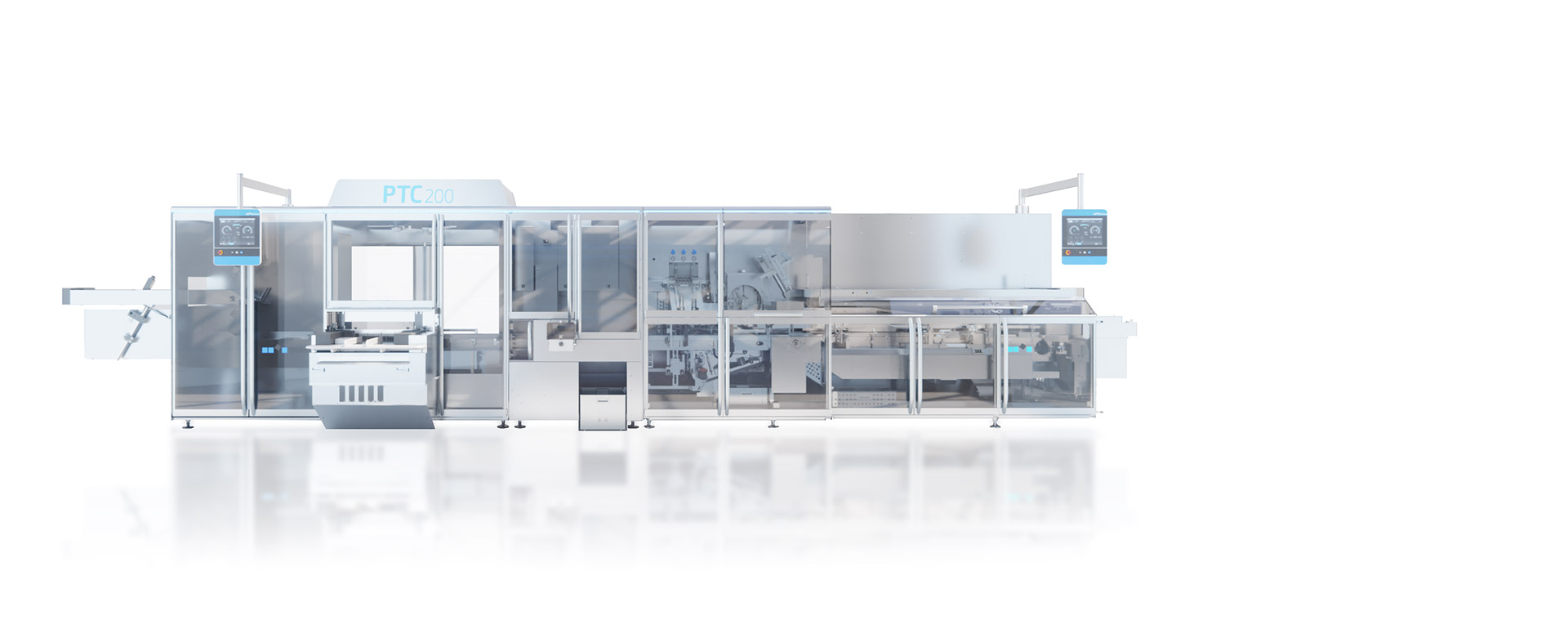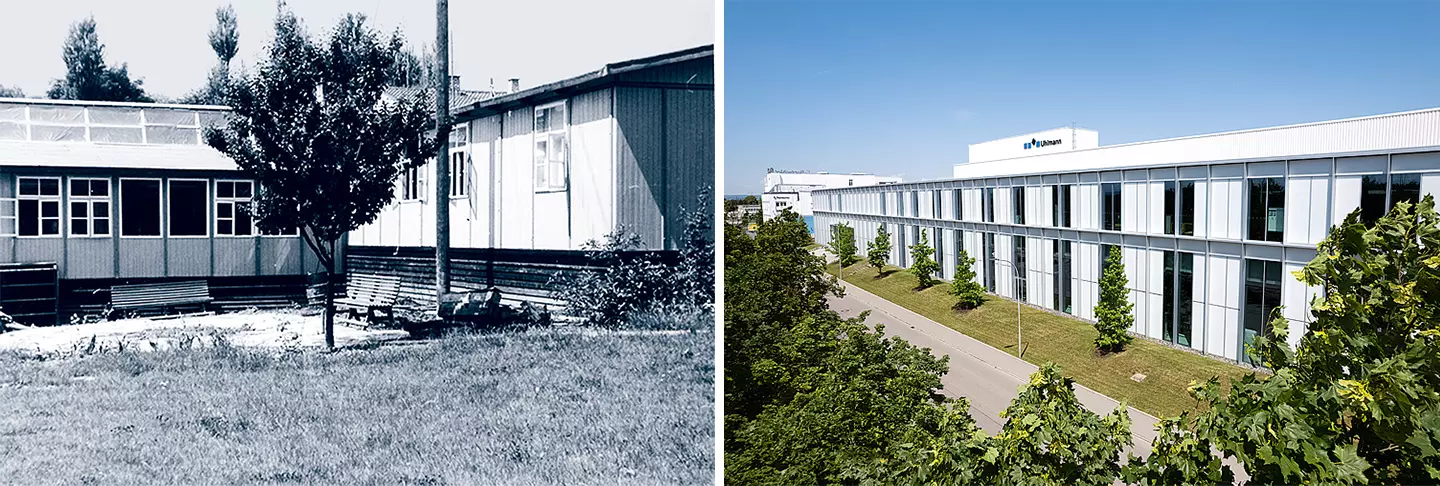
Headquarters in Laupheim
When it was founded in 1948, Josef Uhlmann Maschinenfabrik not only manufactured equipment for medical technology, but also fencing supplies! After starting out in rented premises, the company moved to a new building in Uhlandstrasse in Laupheim in 1956, which came to be known as Plant 1.
Today, Uhlmann’s headquarters are still located in Laupheim, about one kilometer as the crow flies from what was then “Plant 1” in Uhlmannstrasse. Several halls and buildings cover an area of over 40,000 square meters. Highlights include the assembly hall designed by Barkow Leibinger and the office building, which opened in 2021 and was designed in accordance with New Work principles.
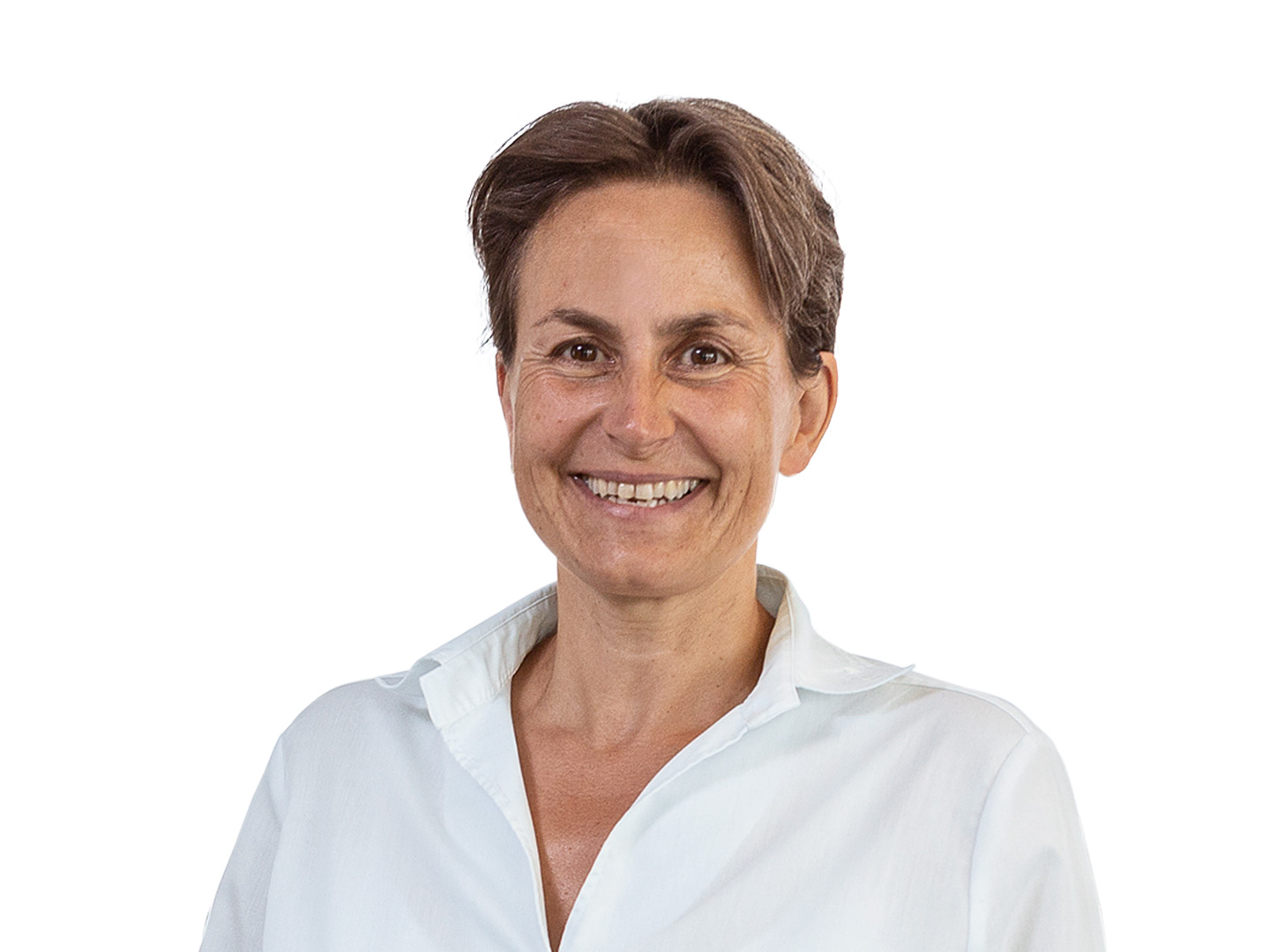
"Surrounded by international representatives of the pharmaceutical industry, Uhlmann’s importance on the world stage becomes clear the minute you enter its reception area."
Annette Rieger, Receptionist
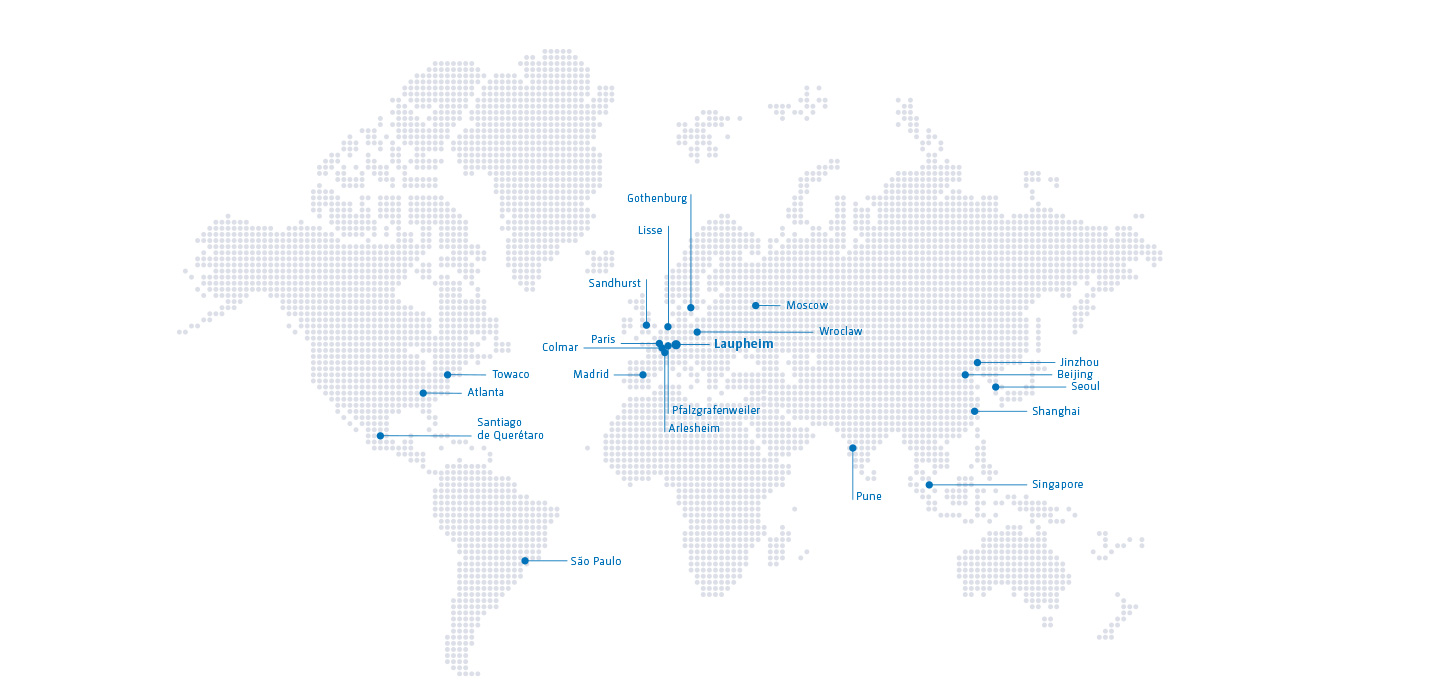
Internationality
In 1948, the foundation stone for the later growth of the Uhlmann Group was laid in Laupheim in southern Germany, some 80 kilometers north of Lake Constance. Laupheim is the hometown of the company’s founder, Joseph Uhlmann, and also of the following generations of the Uhlmann family.
Today, Uhlmann’s headquarters are still located in Laupheim. But since the 1980s, many subsidiaries have been added all over the world. As of 2023, Uhlmann Pac-Systeme operates companies in the USA, Brazil, the UK, Sweden, Spain, Russia, Switzerland, France, Singapore, China, India, Mexico and Korea, and is complemented and supported by more than 40 agencies. Over 1,650 employees give their best every day to optimize your pharmaceutical packaging processes.
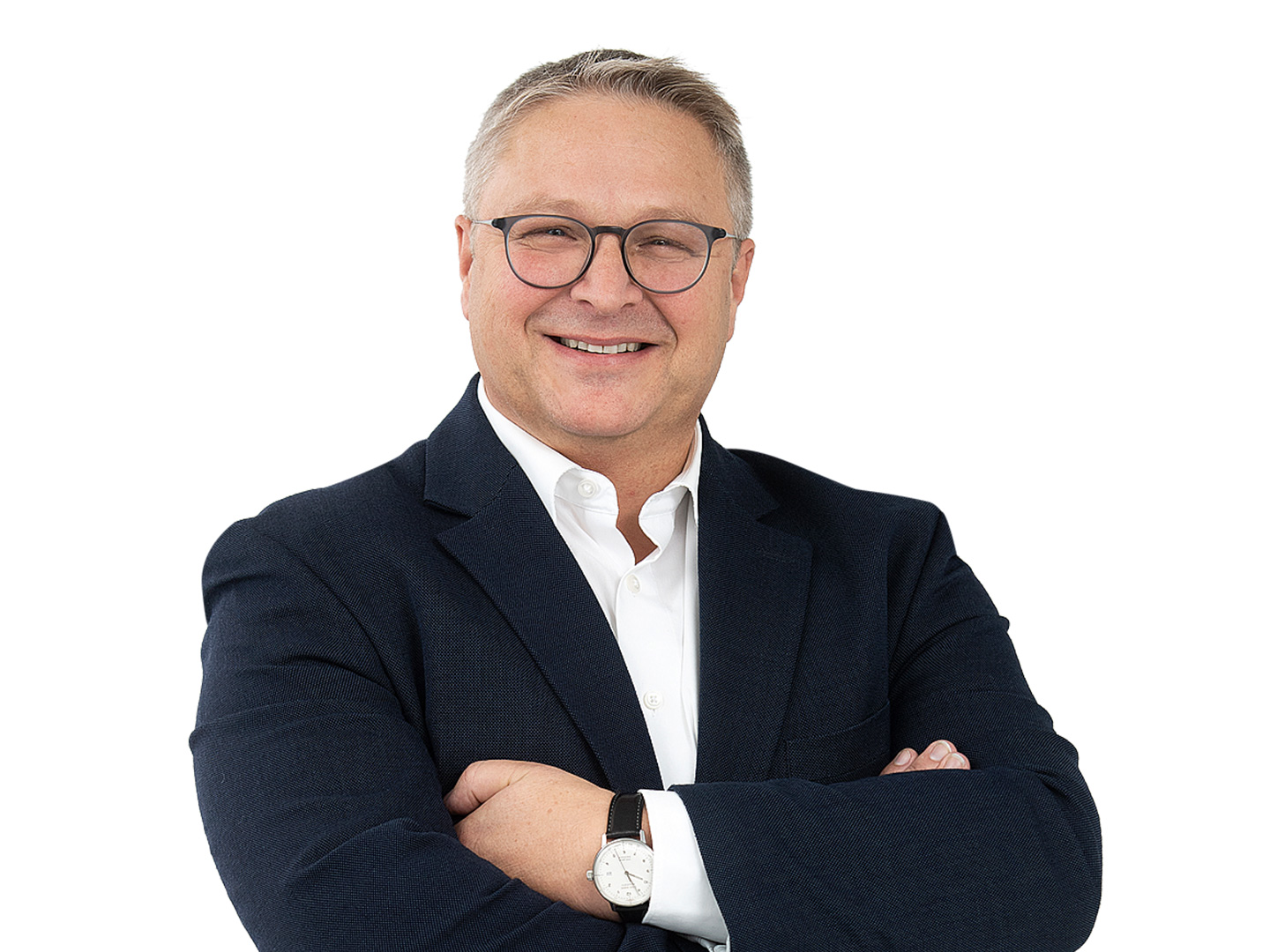
"Uhlmann has evolved from being a regional machine manufacturer to a full-range supplier of digital pharmaceutical packaging solutions and it operates on five continents. This is thanks to the large, international Uhlmann team. Our goal is to continue this success story together – with a strong customer focus and innovative products."
Klaus Braig, Regional Director

Development
Developing new packaging solutions has always been Uhlmann’s mission. Over the years, nothing has changed in that regard. What has changed is the way we work. In the past, technical innovations were designed by hand on drawing boards. If the people involved wanted to discuss the status of a project, they gathered around large sheets of paper. Then, in the 1980s, the first design software was introduced, which initially produced two-dimensional plans.
Today, our teams work with engineering programs that not only represent our machines and lines in three dimensions, but also create so-called digital twins and simulations to test functionalities and improve them. Virtual collaboration makes it easier and faster to network globally with employees at other sites and with customers around the world, thus generating added value for the customer.
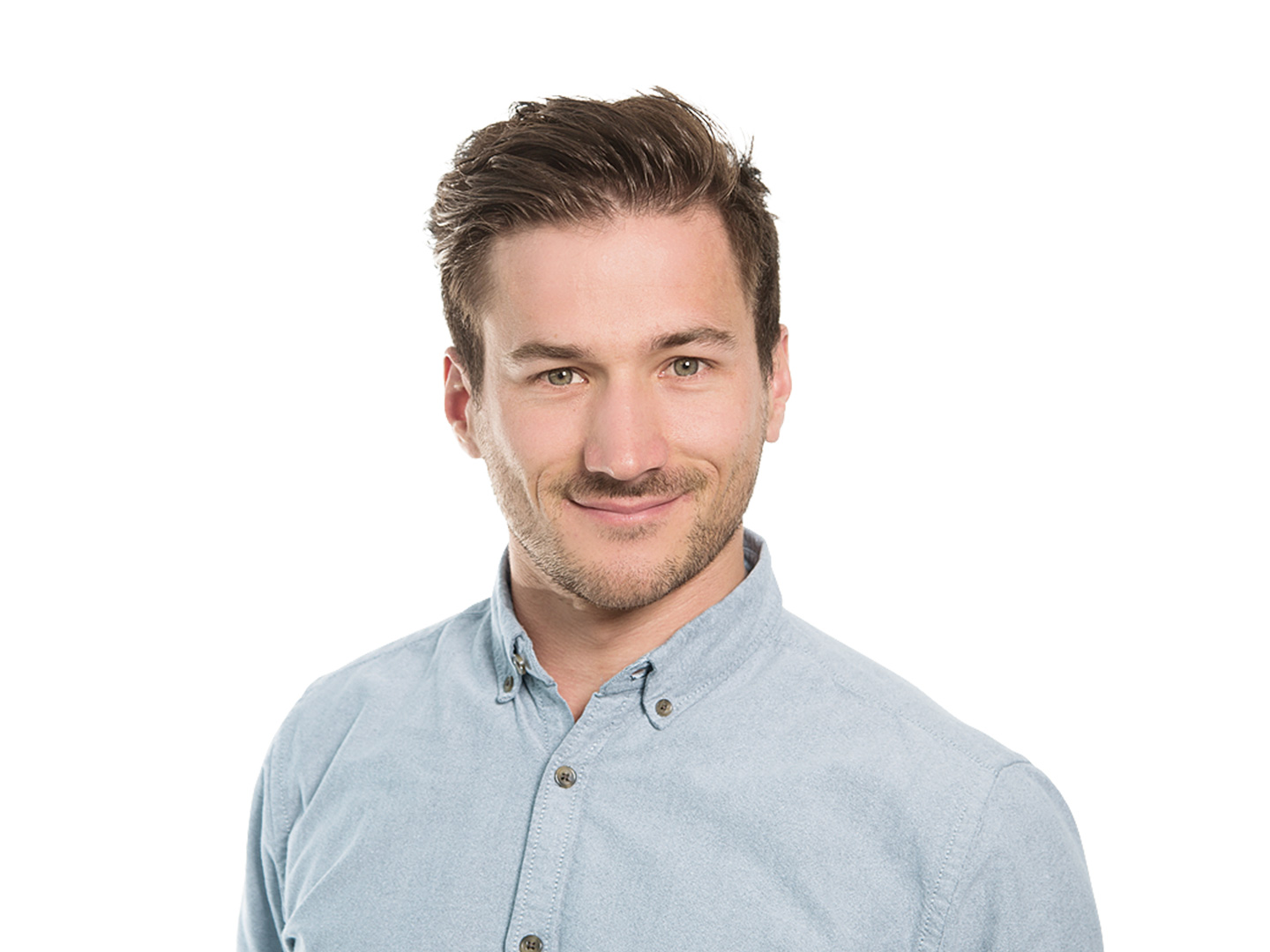
"Based on the latest technical developments, Uhlmann products always have their finger on the pulse of the times. As a result, we are regarded by our customers as an innovative partner. For example, we are currently taking our first steps with datadriven technologies and incorporating them into product development. The focus here is on better utilization of Uhlmann products. At every step, the focus is on the safety of pharmaceutical products, people, systems and data."
Simon Müller, Director Product Development
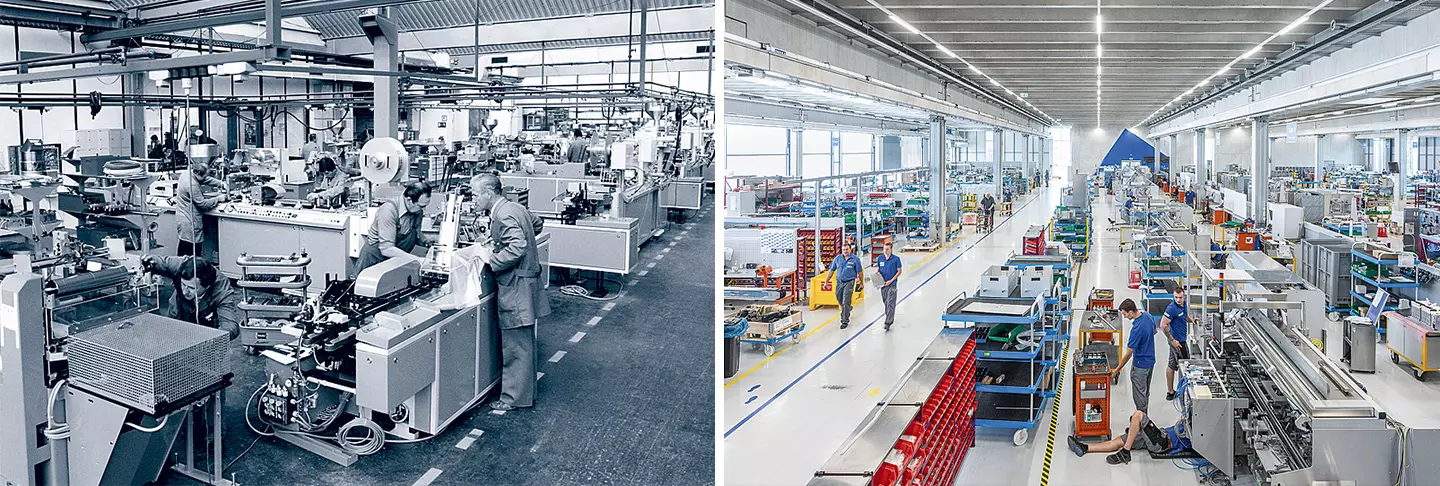
Production
In the beginning, packaging machines still consisted almost exclusively of mechanical components. Trained fitters were able to perform the most important tasks. The machines were compact and the assembly hall in Uhlandstrasse in the 1950s was correspondingly simple to grasp.
Over time, the packaging lines became more complex and larger, with more and more electronic components. Uhlmann acquired additional space and built on it with production halls and offices. Today, the company still largely produces at the Laupheim site, where a new, state-of-the-art assembly and logistics hall was put into operation in 2016. Goods receipt, warehouse, pre-assembly and assembly are networked via efficient, digitally supported processes.
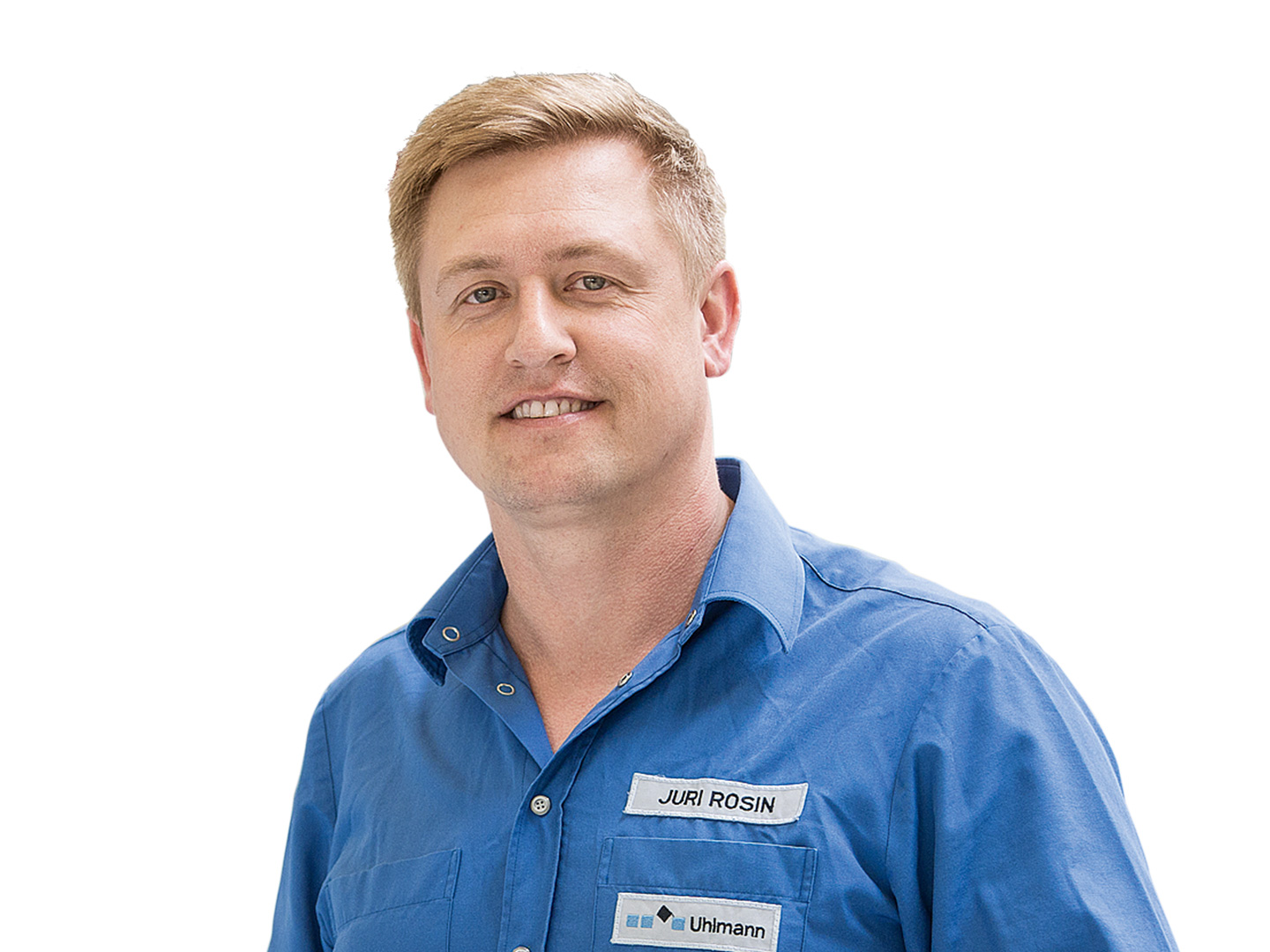
"The software and control content in our lines is increasing steadily. Nevertheless, high-quality materials and careful assembly form the basis for first-class pharmaceutical packaging. We are still a family business where there is no assembly line work, but tailor-made solutions for each customer."
Juri Rosin, Team Leader Assembly Synchronisation
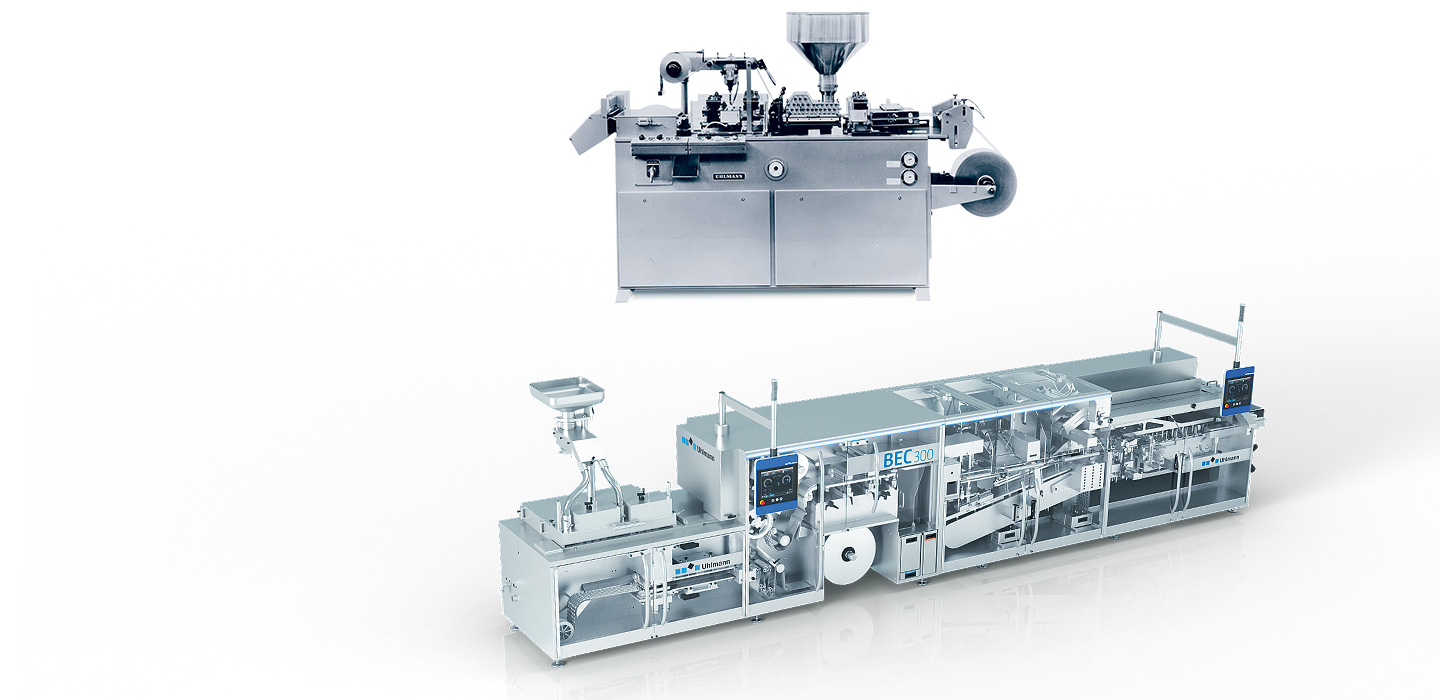
Blister machine
In 1963, Uhlmann launched the first packaging machines that formed a separate pocket for each tablet: the KP series. Previously, most pharmaceuticals had been sold in bottles.
Now the lidding film could be printed, which was ideal for medicines that had to be taken in a fixed sequence – such as the birth control pill, which was launched worldwide at the time. This created a mass market for blister packaging, which Uhlmann helped to pioneer from the very outset.
Today, Uhlmann offers a wide portfolio of blister machines for tablets, dragées and capsules, but also for syringes, ampoules, vials, cartridges, vials and pens. Capacity has increased to up to 1,300 blisters per minute.
Working with a wide range of feeders, sealing principles, inspection systems and other components, Uhlmann’s experts assemble the right blister machine for every pharmaceutical challenge.

"I work for the world‘s best company in the field of pharmaceutical packaging machines. The high-quality products that Uhlmann manufactures and supplies all over the world fill me with pride."
Wang Yu, Marketing Manager
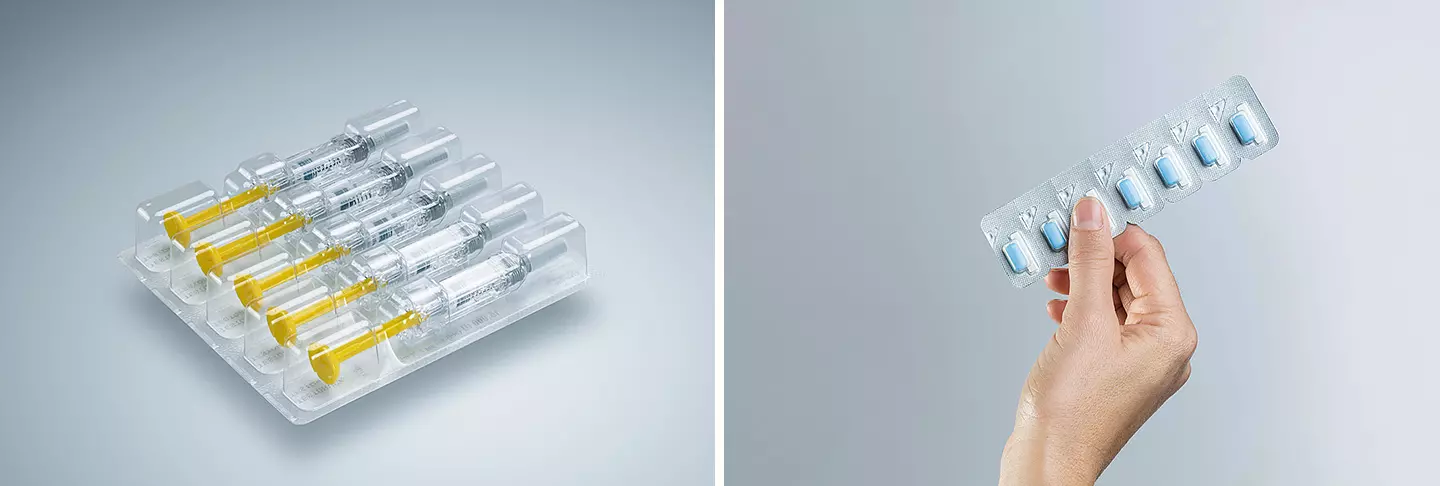
Blister
In 1956, Uhlmann launched the world’s first universal HS strip packaging machine. It packed tablets between two layers of film sealed around the enclosed preparation. The result was long strips in which each individual tablet was protected from dirt and moisture. In 1963, Uhlmann then celebrated its next world premiere with the first blister pack for tablets.
60 years later, the quality and variety of packaging materials have increased enormously. Countless solid and parenteral formats can be packaged in blisters up to 280 x 284 mm – that’s bigger than an iPad! Special solutions such as tropical blisters or blisters with a desiccant glued into each blister cavity protect even the most sensitive active ingredients. Currently, the focus is increasingly on the sustainability of packaging – an area in which Uhlmann is once again a leader.
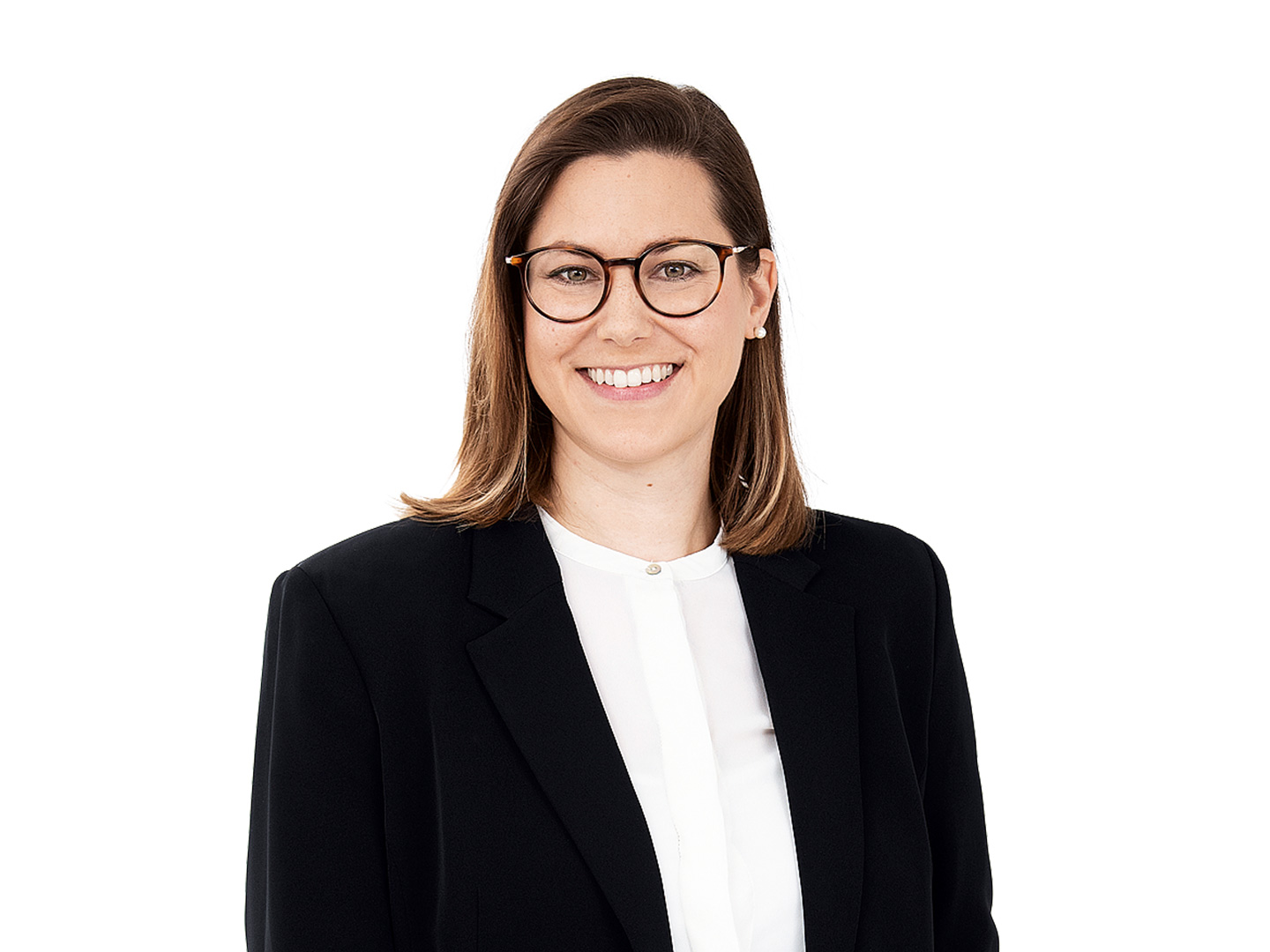
"There are many opportunities in the new development of packaging. Sustainable materials in particular create new impulses for packaging design, with the highest level of patient safety. With our decades of experience and our excellent partner network, we always find the right solution. It is a great pleasure to accompany our customers in designing their processes in a futureproof and sustainable way."
Maren Kobusch, Strategic Product Manager
Smart Services & Tools
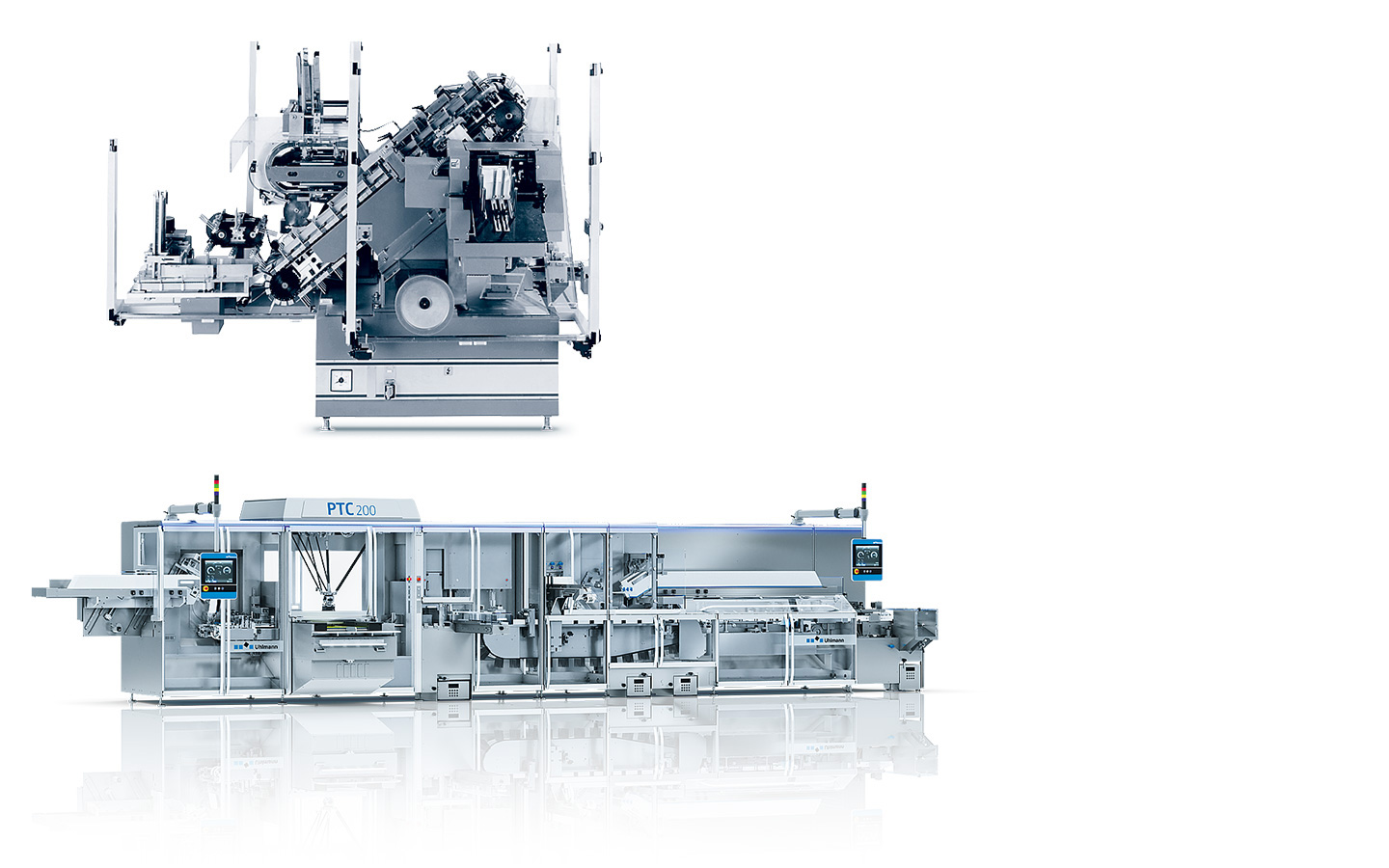
Cartoner
In the early 1980s, Uhlmann was looking for ways to expand its business with packaging machines for blisters. The next logical step was to manufacture cartoning machines itself, in order to be able to offer packaging lines from a single source.
The result of the development work was the first Uhlmann C1 cartoner, which was introduced around the world in 1981. It formed the technological basis for numerous successors with which Uhlmann was to assert itself on the market in the years to come.
Today, the technology has reached a stage where an Uhlmann cartoner can process up to 500 folding cartons per minute. The entire range of pharmaceutical products is packaged: from blisters containing solid or parenteral products to bottles including package inserts, patient information or application aids.
One of the latest innovations is the PTC 200 cartoner line, which sustainably packs ampoules, vials, syringes and other devices in cardboard trays.
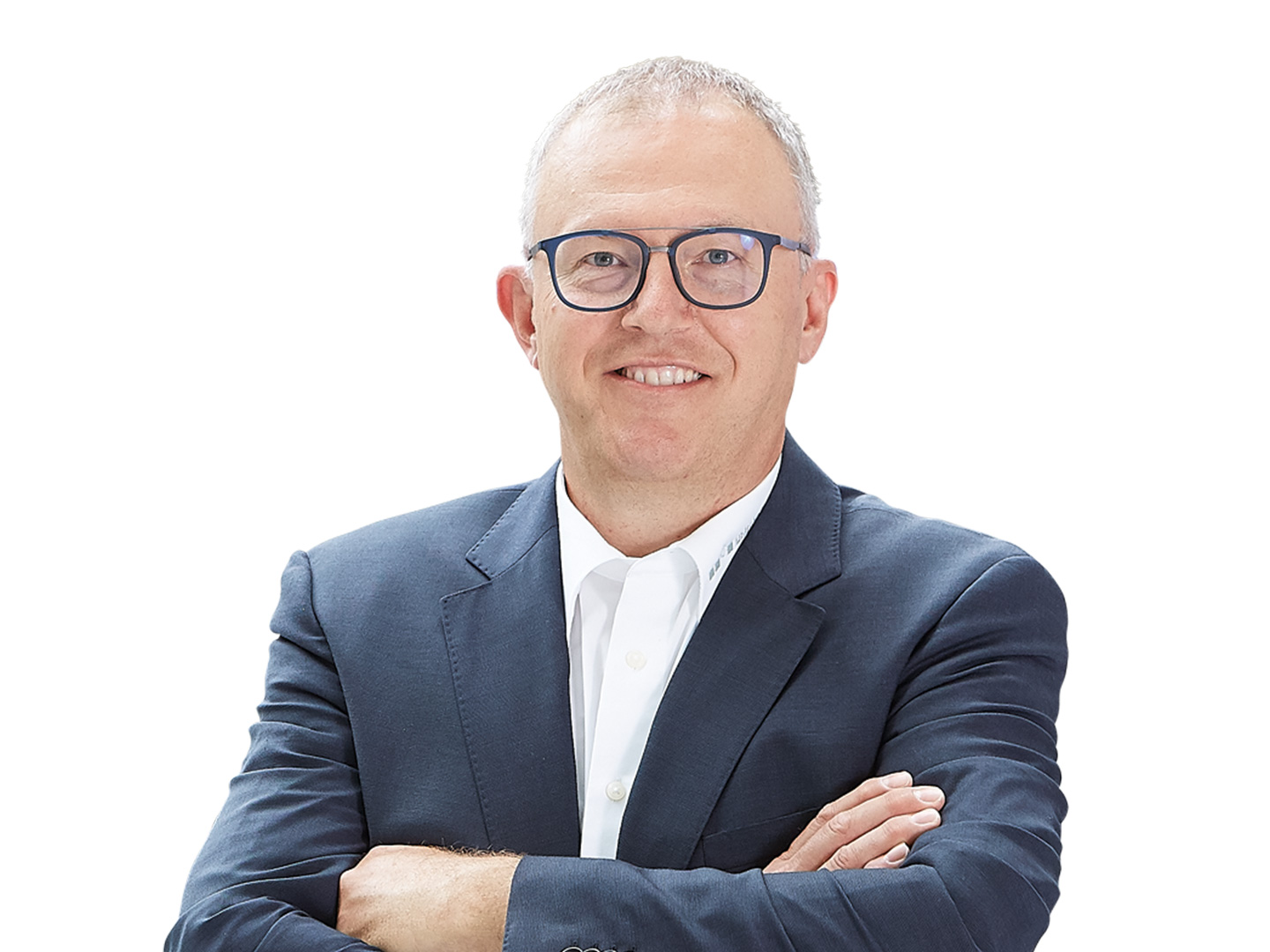
"The decision made 40 years ago to develop cartoners ourselves was the first step towards becoming a system supplier. A lot has happened since then. I am proud that today we can offer our customers the entire line from a single source: from feeding to palletizing, including digital solutions and services."
Werner Blersch, Global Product Manager
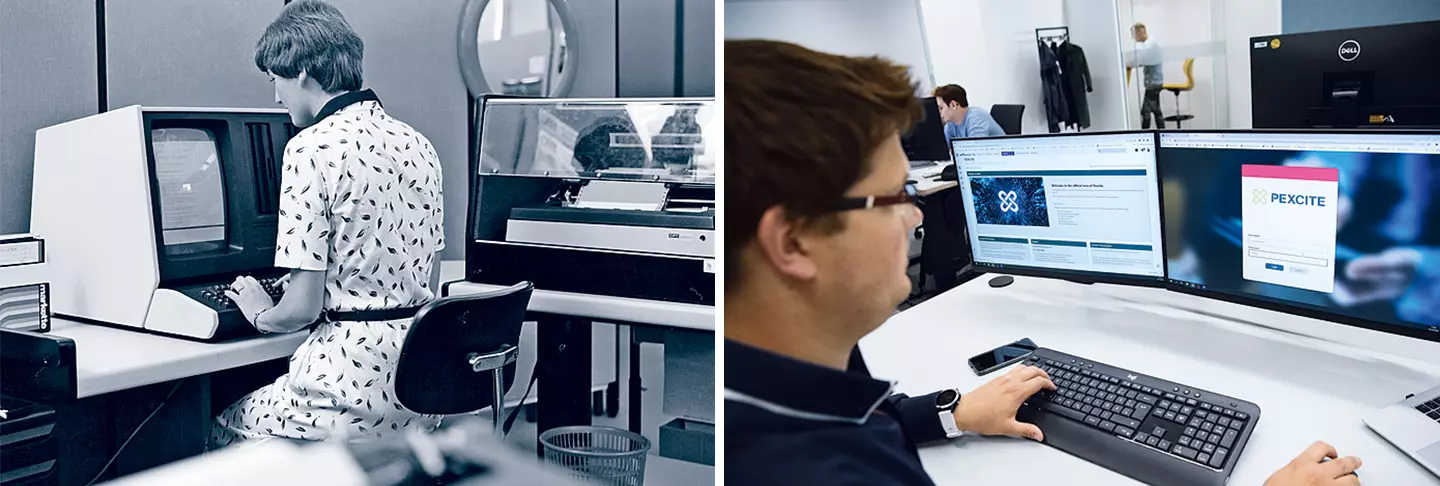
Digitalization
Uhlmann relied on modern technology at an early stage. In the mid-1970s, for example, this meant no longer writing letters on typewriters but on so-called “automatic” typewriters. From the 1980s, the first personal computers came into use.
The impact of digitalization on pharmaceutical packaging has been even more groundbreaking than in office communications. The fact that countless data can now be recorded and evaluated on each individual machine is opening up a new realm of possibilities. With its Pexcite software platform, Uhlmann is actively helping to shape this space. Digital OEE monitoring, predictive maintenance and real-time dashboards for production control are just the beginning.
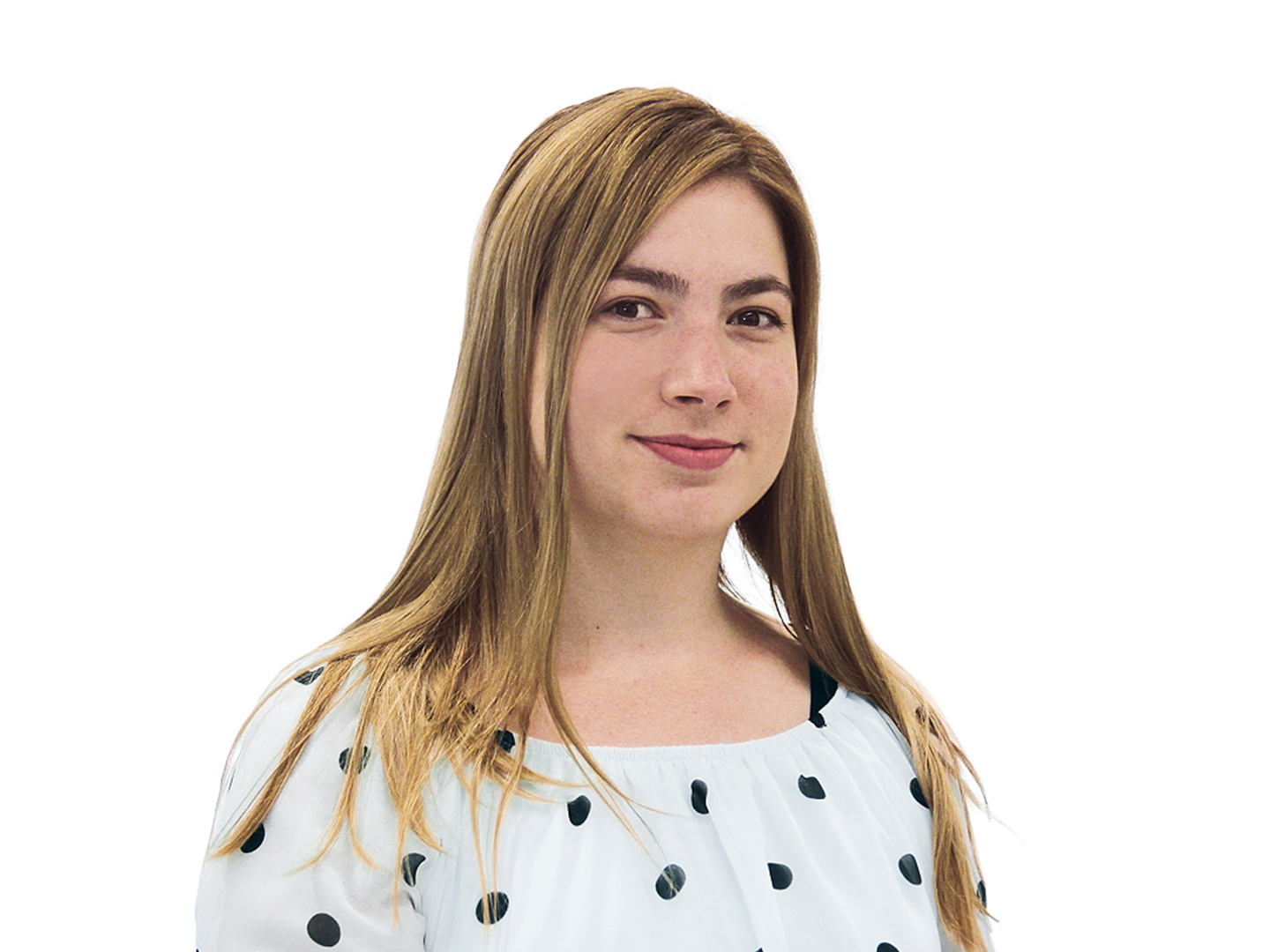
"Being involved in the digital future of pharma packaging is a really exciting task. Uhlmann has taken the lead with an innovative solution, offering more continuity and networking with production processes than a start-up. The company is solid and progressive at the same time –a great advantage for our customers."
Dalila Kajevic, Software Quality Engineer Digital Solutions
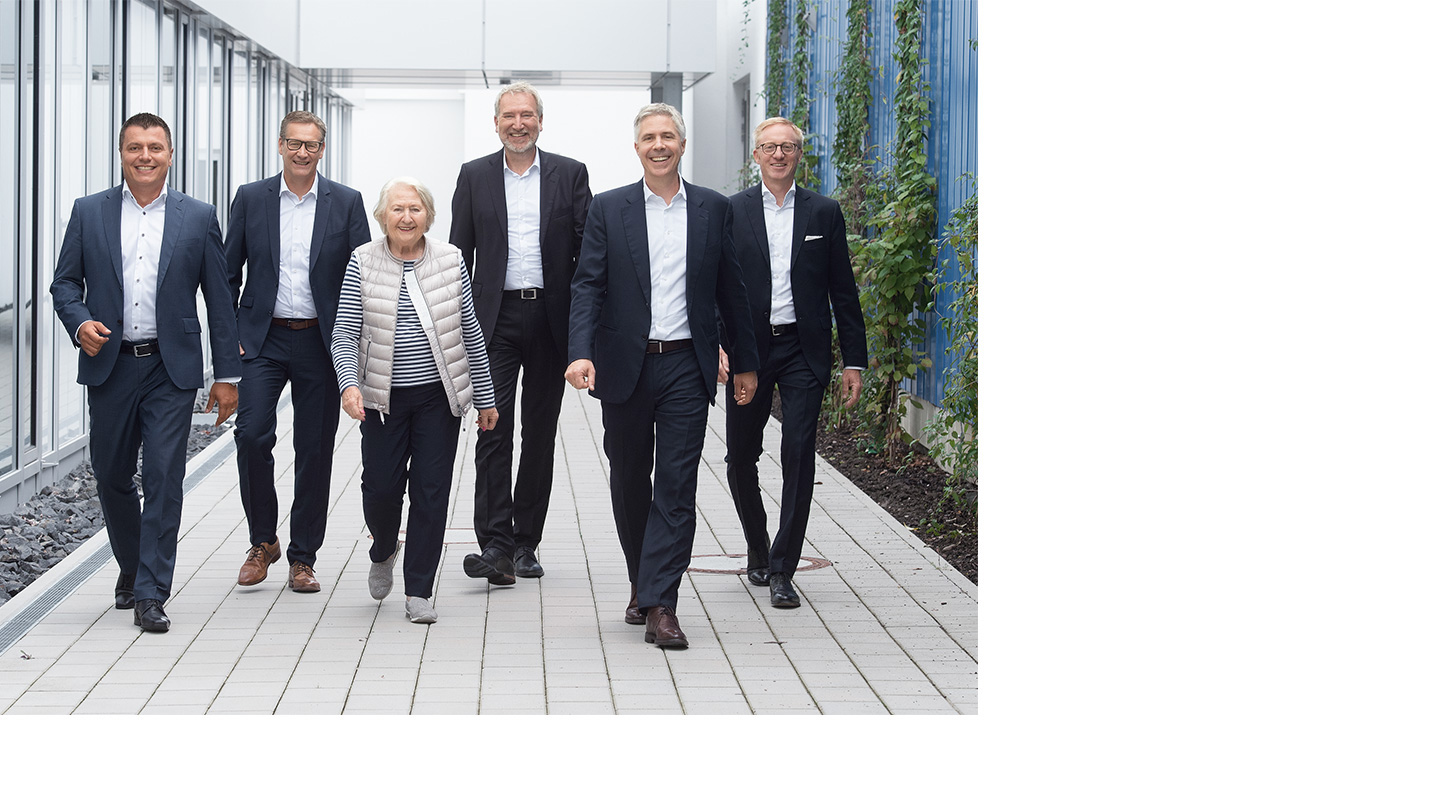
Trust enables short paths, quick decisions and good cooperation. This is the basis on which Uhlmann’s core values grow: strong, open-minded, reliable.
Tobias Uhlmann, Chairman of the Supervisory Board
Optimistic about the future, from left to right: Cristian Reiter (CTO), Michael Mrachacz (CSO), Hedwig Uhlmann, Alexander Schöllhorn (CFO), Tobias Uhlmann, Prof. Dr.-Ing. Matthias Niemeyer (CEO)
Issue 12/2023: 75 years Uhlmann Pac-Systeme
